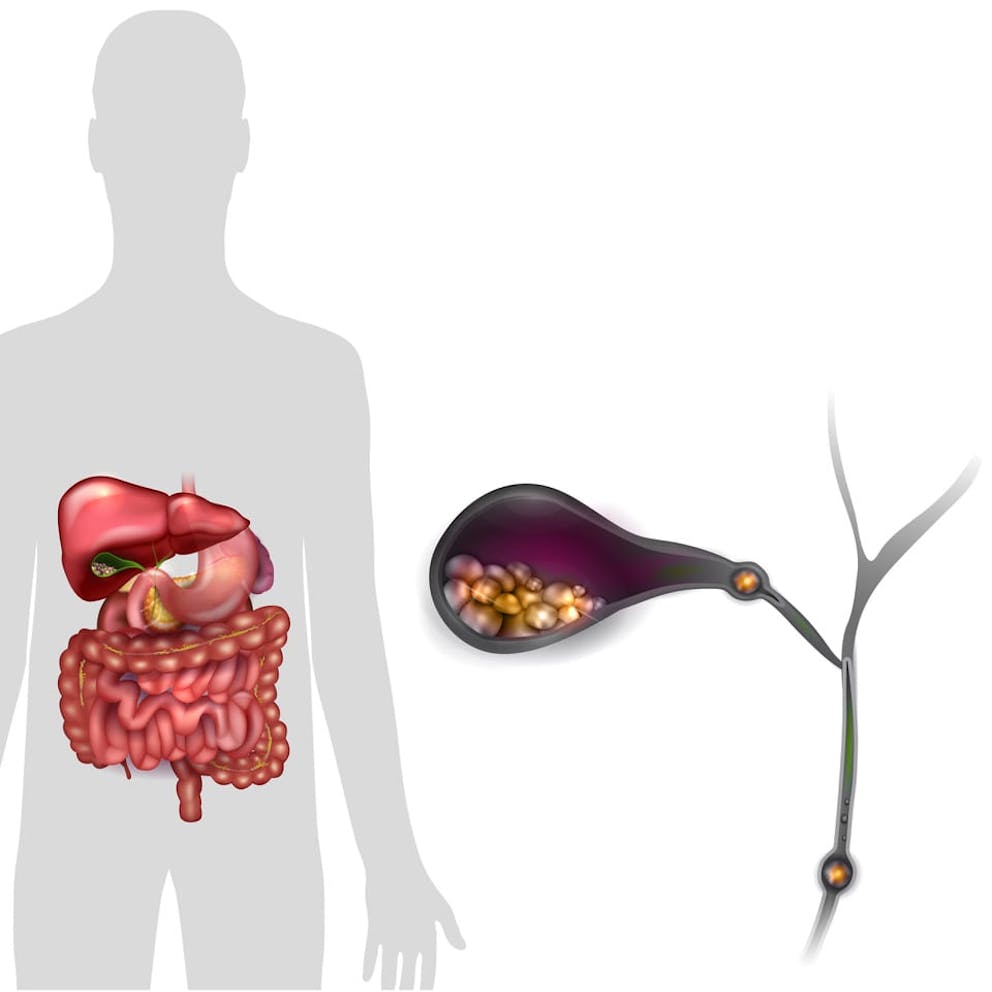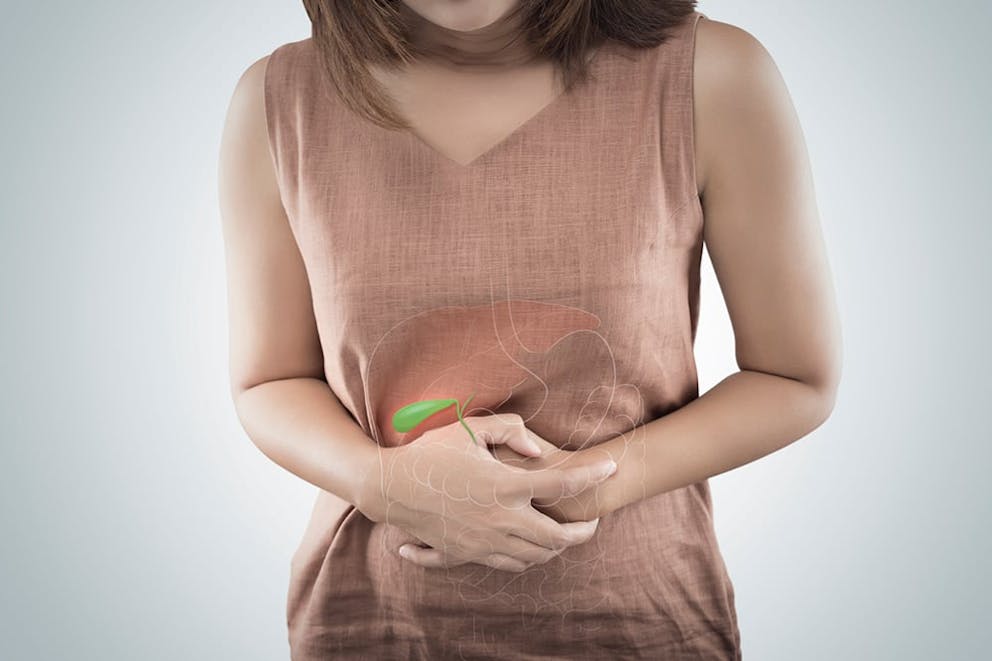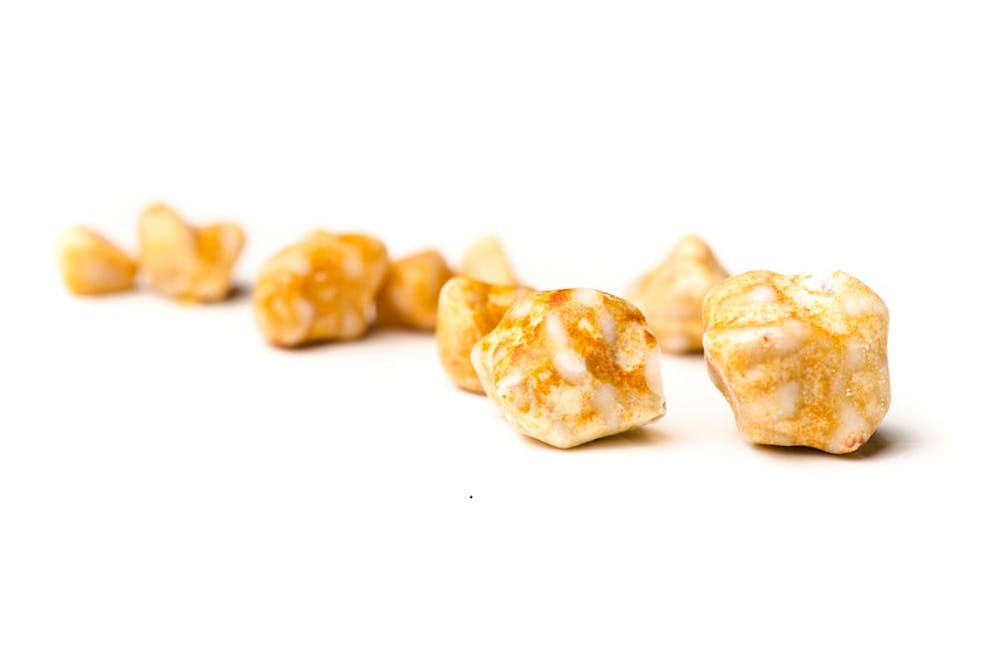What is a Gallbladder Attack
Ever wondered what happens during a gallbladder attack? In this article, you'll learn all you need to know about this painful problem, the symptoms to watch for, and how to help prevent gallstones.
I will cover:
- What is the purpose of the gallbladder?
- What is a gallbladder attack?
- What causes gallbladder attacks?
- How to increase bile levels.
- No gallstones but still gallbladder symptoms?
- Things to keep in mind when you don't have a gallbladder.
- The bottom line.
We will start by looking at the basics of this organ and what it does.
What is the gallbladder and what does it do?
The gallbladder is one of the most ignored organs. It is a small, pear-shaped sac in the upper abdomen, located underneath your right ribcage.

The purpose of the gallbladder is to store and concentrate bile. Your liver creates a substance called bile, which is like a detergent that helps you to break down fats from your food. Bile also helps you to extract and absorb fat-soluble vitamins and essential omega fatty acids (like omega-3 fatty acids).
Your body makes 27-43 ounces of bile per day (400-800 ml). It is yellowish brown/olive greenish in color and is largely made up of cholesterol. It takes 500 mg of cholesterol to make bile.
When the liver releases bile, it travels through the bile ducts to the gallbladder. The gallbladder then stores and concentrates it. When you eat fatty foods, the gallbladder will release bile through the bile ducts into your small intestines, where it goes to work doing its job of breaking down fats and helping you absorb certain nutrients.
Learn all about your amazing gallbladder here.
What is a gallbladder attack?
Certain imbalances in the body can cause issues with bile production and movement.
These factors can cause stone-like structures to form in the bile, which are referred to as gallstones. Gallstones are essentially super concentrated cholesterol stones.

A gallbladder attack occurs when one of these gallstones gets lodged in the bile ducts and creates a blockage. The stuck gallstones can create congestion, swelling, and inflammation. The term "cholecystitis" refers to inflammation of the gallbladder.
The pressure that occurs because of this kind of blockage can end up causing a lot of pain and the other symptoms of a gallbladder attack.
Symptoms of a gallbladder attack
Symptoms can include:
- Stomach or abdominal pain.
- Cramping in the stomach.
- Nausea or vomiting.
- Pain underneath the right rib cage.
- Right shoulder pain or pain between the shoulder blades.

The abdominal pain usually becomes very intense, and it can last from minutes to hours. If the pain and symptoms do not pass with time and continue to worsen, you should seek medical attention for treatment.
Because this organ is located on the right side of the body, the pain and symptoms usually appear there.
And the symptoms don't just occur in the abdomen. A nerve called the phrenic nerve runs from the area by the gallbladder to the right shoulder. And this can cause pain and symptoms all the way up in to the right shoulder and neck area. That could even include things like neck pain or headaches.
What causes gallbladder attacks?
As we have learned above, these attacks occur when gallstones get lodged in the tubes that transport bile. This can be either between the liver and gallbladder, at the opening of the gallbladder, or between the gallbladder and small intestines. The block can lead to pressure, swelling, and a lot of pain.
When people hear that gallstones are actually mostly made out of cholesterol, they often think that they need to stop eating foods with cholesterol in them. But this is a myth. We actually need cholesterol to make bile.
Cholesterol is really a good thing. And plus, our bodies make most of the cholesterol we use and only a small percentage comes from our diet. So high cholesterol-diets are not the problem.
But what is?
Lack of bile is what leads to the formation of gallstones.
If you have enough bile and a healthy amount of cholesterol, you will not have any problems. But when you don't have enough bile to keep cholesterol "thinned" (and not turning into concentrated stones), that is when the problem occurs.
So what makes it so that we don't have enough bile in the first place?

Causes of low bile and gallstone formation
There are three main causes of low bile and gallstones. These include:
- Too much Fat Storing Hormone. Diabetics are at a higher risk of gallstones. This is because high Fat Storing Hormone levels can deplete your bile reserves and lead to gallstones. So if you are Fat Storing Hormone resistant, pre-diabetic, or have diabetes, that can be a problem.
- Too much cortisol. Cortisol is the stress hormone. And when you have too much of it in the body, that can shut down bile production and cause a gallstone. So if you are on a medication like prednisone or are under massive stress, you may be at higher risk.
- Too much estrogen. Women who are pregnant are at a higher risk of gallstones, due to the increase in estrogen in the body. Birth control pills and hormone replacement therapy can also increase your risk of gallstones.
One other risk factor to keep in mind is your gut bacteria. The microbes in our gut are helpful for recycling bile. So if you have been on antibiotics or are having digestive issues, you may need to increase your intestinal flora. This will help increase bile recycling and keep bile levels balanced.
How to increase bile levels
If you are having problems with gallstones, then you'll want to boost your bile production. This will help to prevent gallstones from occurring in the first place.
The first thing to do is to address any of the factors listed above. Work to get your Fat Storing Hormone, cortisol, and estrogen levels in check.
And if you want to learn how to increase bile from the gallbladder with all-natural solutions, then watch this video. I explain the top 10 things that help to increase bile from the gallbladder.
These tips include eating foods like beet tops, ginger, and turmeric. And also taking bile salts to help replenish bile if you've lost too much.
No gallstones but still gallbladder symptoms?
Sometimes, we can end up with gallbladder symptoms but not have any gallstones or gallstone attacks. If this is the case for you, you may have a sluggish gallbladder or thick bile.
When we don't have enough bile, initially we may get thickening of the bile which can lead to congestion, swelling, gallbladder pain, etc. And also symptoms like:
- Constipation
- Bloating
- Belching
- Burping
You might also notice things like right shoulder pain or deficiencies in fat-soluble vitamins.

If you've got these symptoms and think you may have a sluggish gallbladder, try out these 6 tips. Remember, you can have gallbladder problems without having ever had gallstones.
Things to keep in mind when you don't have a gallbladder
Many people have had gallbladder removal surgery. However, you can still end up with digestive discomfort related to bile levels.
Without a gallbladder, your liver will still make bile. It will trickle down the bile ducts straight to your intestines. But because your gallbladder isn't there to concentrate the bile, problems can occur.
Below are two cases to keep in mind if you don't have your gallbladder.
- If you have no gallbladder but have constipation. In this case, it's likely you aren't getting enough bile to your intestines. If you have constipation or sluggishness in the elimination of waste, you may benefit from taking purified bile salts.
- If you have no gallbladder but have diarrhea. You may actually have too much bile coming out, and in this case, you don't want to take more bile salts.
Learn more about what to do when you've had a gallbladder removal here.
The bottom line
Gallbladder attacks are no laughing matter. They can lead to intense abdominal pain that can be very hard to manage.
So it is important to be aware of the symptoms like pain on the right side, nausea, stomach cramping, and more. If you ever think you have a gallstone stuck in the bile ducts and are having an attack, then consult with your medical provider and get immediate care.

With gallstones, prevention is key. Some of the top causes of gallstone formation include:
- ↑ Fat Storing Hormone
- ↑ Cortisol
- ↑ Estrogen
Do what you can to decrease these risk factors, and ensure you are doing what you can to promote bile production.
What do you do to keep your bile levels healthy and your gallbladder happy? Share your thoughts in the comments section below.
Up Next:-
- Does a High Fat Diet Cause Gallstones?
- Eating Fat Does Not Cause Gallstones
- Gallstone Symptoms and Causes
Disclaimer: Our educational content is not meant or intended for medical advice or treatment.
Editor’s Note: This post has been updated for quality and relevancy.
Previous blog
7 Weird Symptoms of Lyme Disease that You Need to KnowTags

Popular
08/21/2024
46.5K views
05/22/2024
40.9K views
11/18/2024
242.4K views
03/18/2024
11/21/2022




